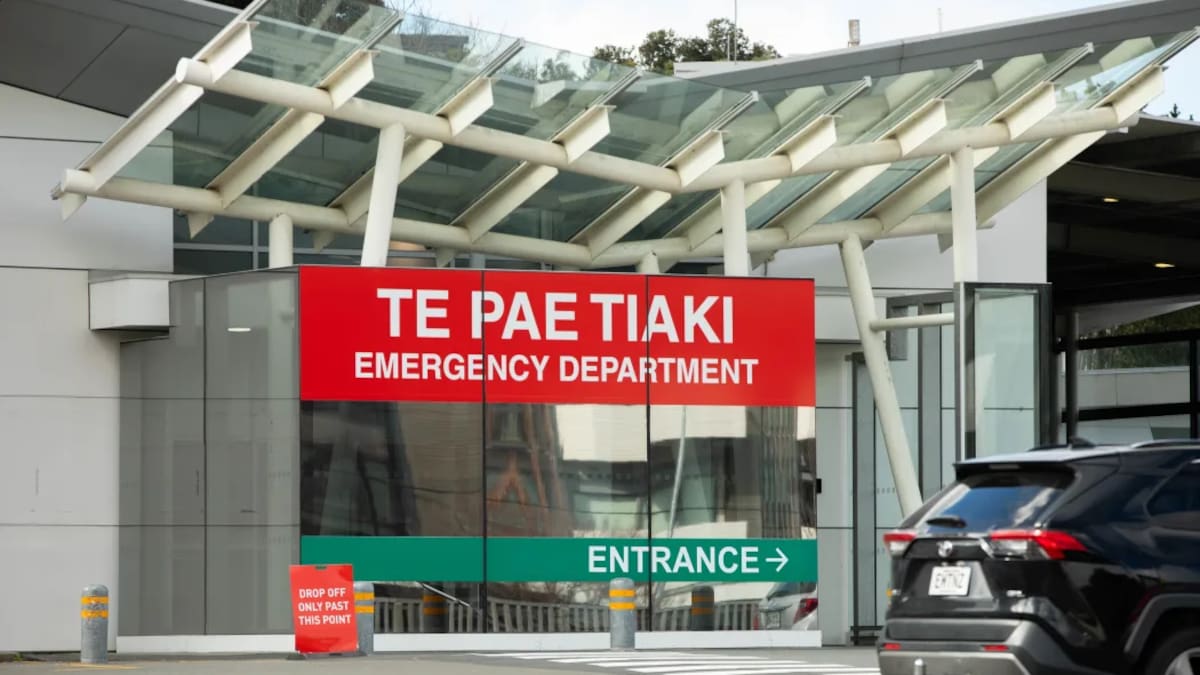“This results in their care being impacted, as well as ED becoming overcrowded, less efficient and effective.”
The manager explained the plan is to reduce the four Women’s Health wards – known as pods – into three, with just two dedicated for maternity.
The gynaecology ward would become a medical ward, and gynaecology patients would move into one of the maternity pods, where they would be obliged to share with any “overflow” maternity patients.
“Re-allocating beds in this way will allow for 12 additional medical beds in the hospital, relieving pressure on ED and provide timely care for sick, vulnerable people.”
It was envisaged that the same number of women could be cared for once the changes were in place, as occupancy figures showed maternity often had unused beds, the manager wrote.
But Midwives Union MERAS (Midwifery Employee Representation and Advisory Service) co-leader Caroline Conroy said Wellington’s maternity unit was “one of the busiest in the country”.
“The monthly stats we get at staffing meetings show the bed utilisation is over 100%. So it’s a really busy unit.”
Wellington took complex cases from the wider region, and it also has a large neonatal unit, so patients with high-risk pregnancies were often sent there to give birth, she said.
“There’s additional pressure on this unit for that reason. So it’s very bizarre.”
Furthermore, this mix of patients carried security risks, she said.
“Medical patients, particularly if they’re elderly and a bit confused, could be wandering around the ward, and into spaces where there are vulnerable young mums and babies.
“I mean, there’s always a potential security risk in maternity wards, because you’ve got babies, and you need to make sure they stay with their mums.”
One Wellington midwife, whom RNZ has agreed not to name, said she and her colleagues were alarmed at the implications.
“It’s the busiest season for births.
“We’re often told there are no beds now, and new mums are having to go to Kenepuru or straight home,” she said.
Sending mothers and babies home before they were ready would likely mean some families would struggle, and readmissions were likely.
“And it’s all in the name of improving the ED stats – ED has expanded, which is great.
“But since they can’t magic up more medical beds, they’ve gone hunting for other space, and women and babies are getting the rough end of the stick, yet again.”
Maternity beds in other regions at risk
Conroy said similar “reallocations” were happening in other regions, including Nelson-Marlborough where maternity beds were being used for day-surgery patients, and Whakatāne, which currently had no obstetric service.
She suspected Government targets for ED wait times and elective surgery were squeezing capacity elsewhere.
“This is one of the problems when they set targets, and we’ve seen this in the past – when the focus and funding goes on those targets, and other services are not given priority.”
Doctors worried
Royal Australian New Zealand College of Obstetricians and Gynaecologists vice-president Dr Susan Fleming said a further squeeze on maternity resourcing was disturbing.
“Demand in obstetrics is not predictable.
“Even ‘elective’ procedures like caesareans are not truly elective. You can push them back hours or even days sometimes, but you don’t have a lot of flexibility.
“When there’s a peak of demand around acute presentations in labour and a demand for inductions and caesarean sections, then there’s no flex capacity, and then the only thing you have is to discharge women from the post-natal wards early.”
It was “ironic” that this was happening at the same time as a Government bill mandating three days post-natal hospital stays was working its way through Parliament, she noted.
“But you can’t do that at the expense of other aspects of the service and without proper resourcing of maternity care. And my understanding is that most maternity units across New Zealand are still struggling with midwifery resourcing, and particularly with the smaller units, with obstetric resourcing.”
Fleming said gynaecology services in Wellington were already “severely constrained” and the loss of ward beds was a further blow.
The email to staff from the manager of the Women’s Health Service said “all necessary infrastructure” was in place to enable the change at Wellington.
Extra medical services staff would be recruited to run the medical pod.
“Patient safety and quality of care will remain paramount, with the monitoring and measuring of impacts to take place over the course of the trial to identify/manage risks and allay concerns, as well as determine opportunities.”
A staff briefing is planned for midday today.
HNZ responds
In response to RNZ’s questions, Health NZ said gynaecology had 12 “resourced” (staffed) beds, with capacity to flex to 14, and 26 resourced maternity beds, with the ability to flex to 37 beds (11 unresourced).
On average, there were seven-nine gynaecology patients, and 20-27 maternity patients a day.
Capital Coast and Hutt Valley director of operations Jamie Duncan said while the maternity unit was often at capacity, that referred to “safe resourcing, or staffing, numbers rather than available beds”.
“In this case, the unused beds are being re-allocated to help increase medical bed capacity and reduce admission wait times for medically unwell patients.”
Maternity patients would continue to be cared for by Women’s Health staff across the three pods; medical patients in the fourth pod will be cared for by additional staff.
“As the safety and quality of care for all patients remains paramount, we will monitor the trial for any impact and act accordingly.”
Maternity and medical patients would not be sharing pods or staff, which mitigated the “potential security risk”, he said.
“We are confident the same number of women will be cared for in gynaecology and maternity during the trial.”
There was often high demand for medical inpatient beds, particularly in winter, and hospitals often used different clinical spaces in the hospital, he said.
“This type of ‘flex’ is not unusual and makes the most of existing infrastructure, as in this case.”
-RNZ






